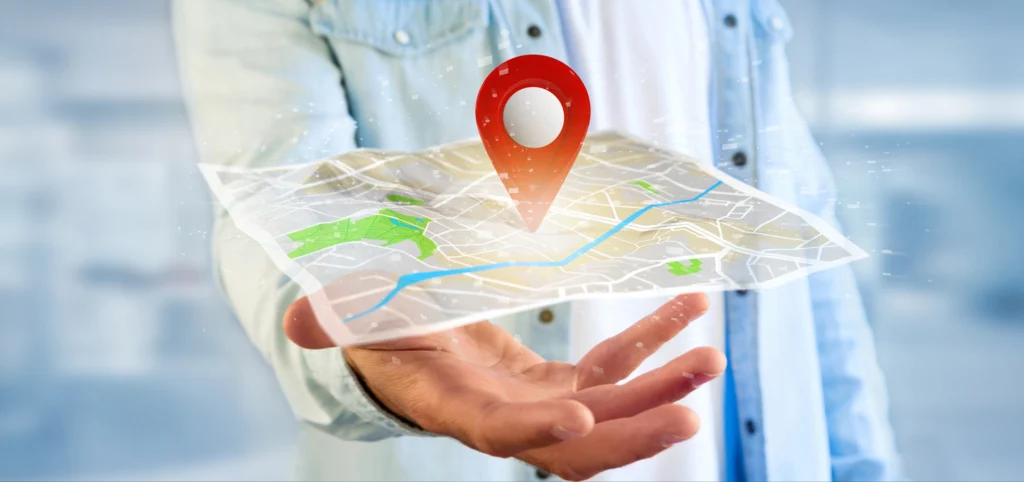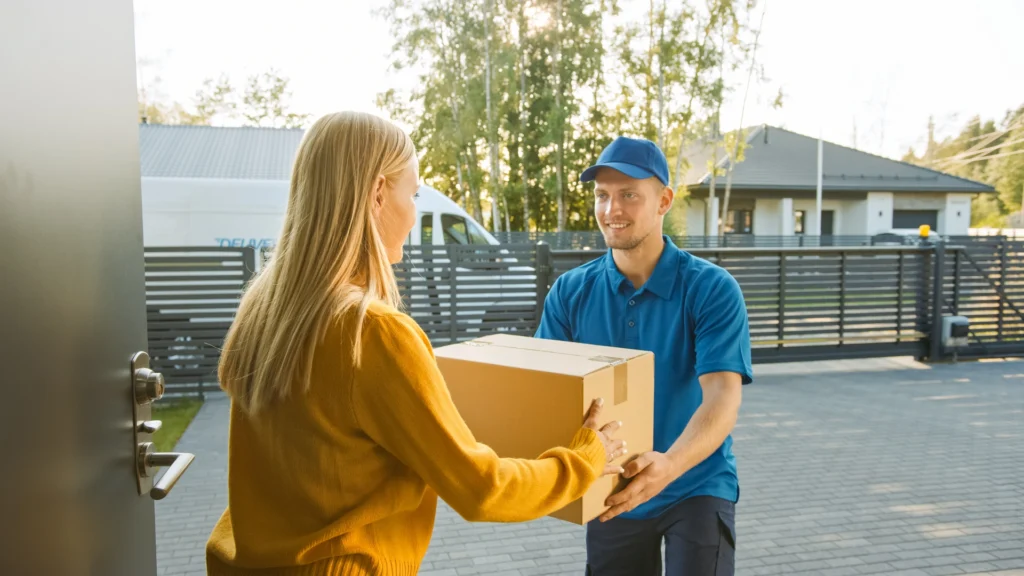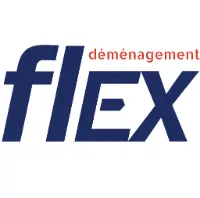34 Supply Chain Experts, Delivery Professionals & eCommerce Retailers Share the Best Ways to Leverage Advanced Technologies to Enhance Last-Mile Efficiency & Reduce Costs

Wise Systems

The last mile of delivery is often the most challenging part of the supply chain. It involves delivering goods from a distribution center to the final destination, which can be a residential address or a retail store. Historically, this process has been inefficient and costly, leading to delays and increased expenses.
Advancements in technology, such as route optimization software, GPS tracking, and drones, have the potential to revolutionize last-mile delivery. By incorporating these technologies into their operations, businesses can enhance efficiency, reduce costs, and provide a better overall customer experience. We reached out to a panel of industry experts to explore the best ways to leverage advanced technologies to enhance last-mile efficiency and reduce costs.
In this article:
- What is Last-Mile Efficiency?
- The High Cost of Last-Mile Delivery
- Meet Our Panel of Supply Chain Experts, Delivery Professionals & eCommerce Retailers
- How to Leverage Advanced Technologies to Enhance Last-Mile Efficiency & Reduce Costs
- Frequently Asked Questions
What is Last-Mile Efficiency?

Last-mile efficiency refers to the concept of optimizing the final stage of a delivery process, where products or services are transported from a distribution center to the end user. This stage is often the most complex and costly part of the supply chain, as it involves navigating through traffic, dealing with last-minute changes, and ensuring timely and accurate delivery to the customer’s doorstep.
Companies focus on improving last-mile efficiency by utilizing technology, data analytics, and logistics solutions to streamline operations, reduce costs, and enhance customer satisfaction. By maximizing last-mile efficiency, businesses can improve delivery times, reduce carbon emissions, and gain a competitive edge in the crowded e-commerce and logistics industry.
The High Cost of Last-Mile Delivery

The cost of last-mile delivery can vary depending on several factors, including the distance traveled, the mode of transportation used, the size and weight of the package, and the level of service required.
One of the main costs associated with last-mile delivery is transportation. Whether packages are delivered by truck, van, bicycle, or even drones, the cost of fuel, maintenance, and labor all contribute to the overall cost of last-mile delivery.
Additionally, the increasing demand for faster delivery services, such as same-day or next-day delivery, can also drive up costs as companies may need to invest in additional resources to meet customer expectations.
Another factor that can impact the cost of last-mile delivery is the level of technology and automation used in the process. Companies that invest in route optimization software, GPS tracking systems, or automated sorting and delivery systems may be able to reduce costs by improving efficiency and reducing the need for manual labor. However, these technologies can also come with high upfront costs, which may be a barrier for some businesses.
Additionally, the rise of e-commerce and the growth of online shopping have also contributed to the increasing cost of last-mile delivery. As more customers expect free shipping and fast delivery options, companies are under pressure to provide competitive shipping rates while still maintaining profitability. This can be challenging, especially for smaller businesses that may not have the scale or resources to negotiate favorable terms with shipping carriers.
To dig deeper into the advanced technologies and strategies that can help companies improve last-mile delivery efficiency and reduce costs, we reached out to a panel of supply chain experts, delivery professionals, and e-commerce retailers and asked them to answer this question:
“What are the best ways companies can leverage advanced technologies to enhance last-mile efficiency and reduce costs?”
Meet Our Panel of Supply Chain Experts, Delivery Professionals & eCommerce Retailers
How to Leverage Advanced Technologies to Enhance Last-Mile Efficiency & Reduce Costs
Keep reading to learn some of the most effective strategies for leveraging advanced technologies to enhance last-mile efficiency and reduce costs.
 Billy Parker
Billy Parker
Billy Parker is the Director of Gift Delivery.
“The best ways for companies to leverage advanced technologies to enhance last-mile delivery efficiency and reduce costs are…”
Through the use of automation, data analytics, and route optimization.
Automation, such as the use of drones or robots, can significantly speed up the delivery process and reduce human error. Data analytics can help companies identify patterns and optimize their delivery routes, resulting in faster and more cost-effective deliveries.
Additionally, route optimization software can help companies plan the most efficient routes for their drivers, reducing fuel costs and improving delivery times.
Discover how the Wise Systems delivery automation platform can automate your dispatch and routing processes. Schedule a demo today.
 Jon Torres
Jon Torres
Jon Torres is the founder and CEO of JonTorres and UpVenture Media.
“The best way for companies to leverage advanced technologies to enhance last-mile delivery efficiency and reduce costs is…”
With predictive analytics.
Companies can predict peak delivery times and optimize routes by analyzing historical data and external factors like traffic patterns, weather, and local events. This ensures timely deliveries, reduces fuel costs, and minimizes environmental impact.
I once implemented a predictive analytics tool for a client. By factoring in various data points, I anticipated demand surges during specific hours and adjusted delivery schedules accordingly. This led to a significant reduction in delivery times, increased customer satisfaction, and a noticeable decrease in operational costs related to last-mile logistics.
 Sandra Malouf
Sandra Malouf
Sandra Malouf is the President of Eurolog Packing Group.
“The best way for companies to leverage advanced technologies to enhance last-mile delivery efficiency and reduce costs is…”
By implementing sustainable practices. The incorporation of sustainable practices into last-mile delivery, such as the utilization of electric cars, the implementation of carbon offset programs, or the adoption of environmentally friendly packaging materials, not only lessens the impact on the environment but also reduces the costs of carrying out operations over the long run.
Customers are showing a growing preference for ecologically responsible businesses, which is making sustainable practices a competitive advantage in the world of last-mile delivery. By embracing sustainability, businesses have the opportunity to improve their brand image while also lowering their expenses for fuel and maintenance over time.
 Robert Power
Robert Power
With a career spanning over 20 years, corporate and large business expert Robert Power is a seasoned professional with profound expertise in the realm of freight forwarding and logistics. As the Owner and Operational Director of Power Forwarding, he steers the company’s vision and operations with a blend of experience and innovation.
“Adopting advanced technologies is key for businesses looking to optimize last-mile delivery processes, as they can help enhance overall efficiency and cut costs…”
For instance, companies could implement route optimization algorithms powered by AI to reduce delivery times and fuel consumption. Real-time tracking systems can also be used to provide clear visibility and ensure accurate ETAs.
They also help find solutions to various issues quickly, allowing a business to run smoothly without any disruptions to the supply chain. Automation is another key factor, whether it be through drones or autonomous vehicles, as these can accelerate delivery speed, especially in urban areas.
The inclusion of Internet of Things (IoT) devices for predictive maintenance can reduce vehicle downtime. Cloud-based logistics platforms can streamline operations and build collaboration among stakeholders. Advanced analytics extract insights from data, aiding in demand forecasting and resource allocation.
Robotics are improving every year and are already being used to assist in warehouse processes, speed up order fulfillment, and allow workers to focus on other important, often safer tasks.
Mobile apps have long been beneficial tools for companies. When paired with user-friendly interfaces, customer communication can be streamlined and enhanced.
By integrating these types of modern technologies, I believe businesses can improve operational efficiency, whilst simultaneously enhancing customer satisfaction. When used correctly, these technologies offer businesses a competitive edge in the rapidly evolving last-mile delivery landscape.
Request a demo with Wise Systems today to learn how our AI-driven Dynamic Optimization Engine (DOE) can make data-driven decisions to optimize your operations.
 Jay Barton
Jay Barton
Jay Barton is the CEO of ASRV.
“The best way for companies to leverage advanced technologies to enhance last-mile delivery efficiency and reduce costs is…”
Predictive analytics, which uses previous data and machine learning algorithms, can be used to accurately forecast client demand.
Businesses can also plan optimal inventory management and more efficient delivery routes by analyzing historical trends and fluctuations throughout specific seasons. This preventive strategy lessens the likelihood of stockouts or overstocking, lowers the expenses associated with storage, and streamlines the process of delivering the final mile of the product.
 Darren Graham
Darren Graham
Darren Graham is the Company Director of 408 Media Group.
“My perspective on enhancing last-mile efficiency in e-commerce, particularly for home and outdoor living brands, is rooted in strategic digital initiatives, including…”
- Digital Integration in Supply Chain Management: The use of digital tools in supply chain management, especially software that provides real-time data and analytics. This can lead to more informed decisions regarding inventory management, which directly affects last-mile delivery efficiency.
- Targeted Marketing Strategies for Demand Forecasting: Utilizing digital marketing insights to predict customer demand patterns. Accurate demand forecasting can streamline inventory allocation, reducing last-mile delivery challenges by ensuring that products are available closer to the customer base.
- Customer-Centric Delivery Options: Implementing flexible delivery options, such as scheduled deliveries or secure parcel lockers, tailored to the customer’s convenience. This approach can reduce the cost of redeliveries and improve customer satisfaction, which is pivotal for online sales in the home and outdoor living sector.
- Leveraging Localized Fulfillment: Encouraging partnerships with local suppliers or setting up smaller, strategically placed warehouses. This not only shortens the delivery distance but also aligns with the increasing customer preference for supporting local businesses.
- Sustainable Practices in Last-Mile Delivery: Implementing eco-friendly delivery methods can be a unique selling point for home and outdoor living brands. This might include using electric vehicles or bicycles for deliveries, aligning with the growing consumer trend towards environmental consciousness.
- Enhanced Customer Communication: Using digital platforms for effective communication regarding delivery times, delays, and feedback. Keeping customers informed and engaged improves their overall experience and brand loyalty.
- Investment in Training and Development: Ensuring that the staff, especially those handling last-mile delivery, are well-trained in customer service and efficient delivery practices. A well-trained team can significantly enhance operational efficiency.
From this perspective, enhancing last-mile efficiency is not just about reducing costs but also about creating value through customer satisfaction, sustainable practices, and smart use of digital marketing insights. These strategies not only improve efficiency but also bolster the brand image, particularly important in the competitive home and outdoor living market.
 David Cohen
David Cohen
David Cohen is the CEO of Flower Station. They’re one of the UK’s largest online flower delivery services, with several central London shops open 24/7.
“In optimizing last-mile efficiency at Flower Station, embracing advanced technologies is key…”
Implementing route optimization algorithms, GPS tracking, and real-time analytics minimizes delivery times and enhances cost-effectiveness. Automated sorting systems in our central London shops expedite order processing, reducing manual errors and improving overall logistics.
Leveraging AI and machine learning ensures predictive delivery times, enhancing customer satisfaction. Integrating these technologies not only streamlines operations but also enables proactive decision-making, vital for success in the e-commerce and last-mile delivery landscape.
 Virginia Miller
Virginia Miller
Virginia Miller is a Spokesperson for Simple Fulfillment, an Austin-based leader in eCommerce fulfillment and FBA Prep.
“The best ways for companies to leverage advanced technologies to enhance last-mile delivery efficiency and reduce costs are…”
- Artificial Intelligence (AI) and Machine Learning (ML): These technologies allow us to predict logistic patterns with much higher accuracy. For instance, we’ve implemented AI at Simple Fulfillment to forecast peak delivery times, enabling us to better allocate resources and ultimately reduce overheads.
- Automated Delivery Vehicles (ADV): The integration of drones or self-driving delivery vehicles can significantly speed up delivery while reducing labor costs. At Simple Fulfillment, we’re closely monitoring the trials and potential implementation of ADVs into our model.
Moving onto actionable insights, it’s not just about introducing shiny new tech but rather about understanding how to integrate these technologies strategically.
- Data-driven Decision-Making: Use AI and ML analytics to optimize routes, schedule deliveries, and anticipate volume fluctuations. For example, we slashed delivery times by 20% after switching to data-based route planning.
- Agile Innovation: Be prepared to adapt and evolve with the emerging tech landscape. At Simple Fulfillment, we regularly upskill our team, ensuring we don’t just keep up with industry advancements but stay one step ahead.
 Vladimir Terekhov
Vladimir Terekhov
Vladimir Terekhov is the CEO of Attract Group, a company that excels in digitalizing businesses through custom software development. They’ve worked extensively in optimizing logistics and shipping processes for their clients.
“The best ways companies can leverage advanced technologies to enhance last-mile efficiency and reduce costs are…”
- Route Optimization Software: Use AI-driven tools to calculate the most efficient delivery routes in real time, considering traffic, weather, and other variables.
- Real-time Tracking: Implement systems that allow both the company and the customer to track the delivery process in real time, reducing uncertainty and improving customer service.
- Autonomous Delivery Vehicles: Explore the use of drones or self-driving vehicles for small package deliveries to reduce labor costs and increase speed.
- Smart Lockers: Set up centralized delivery locations where customers can pick up their packages at their convenience, reducing failed delivery attempts.
- Data Analytics: Collect and analyze data to identify patterns and inefficiencies in the delivery process, allowing for more informed decision-making.
- Customer Communication Tools: Deploy automated messaging systems to keep customers informed about delivery statuses, minimizing the need for customer service calls.
- Eco-friendly Vehicles: Invest in electric or hybrid delivery vehicles to reduce fuel costs and carbon footprint, which is increasingly important to consumers.
 Andrew Johnson
Andrew Johnson
Andrew Johnson is a Harvard-educated digital strategist with expertise in online promotions, trend forecasting, and consumer behavior analysis. Andrew merged all of these interests into one platform, Giveaways.org.
“Leveraging advanced technologies is pivotal to enhancing last-mile delivery efficiency and cost reduction…”
Implementing route optimization software, powered by AI algorithms, streamlines delivery routes, minimizing transit times and fuel costs. Integrating IoT-enabled tracking and sensors ensures real-time visibility, allowing for proactive issue resolution and improved customer communication.
Drones and autonomous vehicles offer innovative alternatives for quick, cost-effective deliveries, especially in urban areas. Embracing these technologies empowers companies to navigate the complexities of last-mile logistics, achieving operational excellence, and meeting the evolving demands of modern consumers.
Book a Wise Systems demo today to learn how our advanced route optimization software can help your organization cut costs and boost efficiency.
 Elisa Bender
Elisa Bender
Elisa Bender is the co-founder of RevenueGeeks.
“Companies can use route optimization algorithms to figure out the best and quickest routes for their delivery trucks…”
These programs look at things like traffic and past delivery data to decide the fastest way to deliver packages.
By doing this, companies can save money on fuel and make deliveries faster. It’s like finding the quickest way to your friend’s house, but for delivery trucks. This helps companies make their customers happy by delivering things on time and saves them money by making the delivery process more efficient.
 Sergey Dvorkin
Sergey Dvorkin
Currently serving as the President of Flex Moving and Transport in Montreal, Sergey Dvorkin oversees the operations of this rapidly growing full-service moving company. In this capacity, he has developed a keen ability to harmonize customer-centric approaches with the creation of streamlined processes, ultimately resulting in cost reductions.
“The best ways for companies to leverage advanced technologies to enhance last-mile delivery efficiency and reduce costs are…”
Systems for Fleet Management
The last-mile delivery strategy’s KPIs, such as the proportion of on-time, full deliveries, exceptions, and proof of delivery, may all be tracked and updated with a fleet management system (FMS). The last-mile operator can gain information from these KPIs regarding the vehicle’s operating efficiency and the overall customer experience.
Supply chain visibility solutions can incorporate FMS, giving businesses and consumers access to data via system dashboards.
Self-Driving Cars
Logistics experts are seeing a change in the last-mile delivery scenario due to autonomous vehicles. These self-driving cars come with several advantages that increase productivity and cut expenses.
Autonomous vehicles can navigate highways securely and effectively, reducing the chance of accidents, thanks to their sophisticated sensors and algorithms. These vehicles are guaranteed to run around the clock, providing round-the-clock delivery services for logistics experts.
Additionally, autonomous cars reduce carbon emissions, increase fuel efficiency, and support sustainability. Organizations can save on labor expenses and optimize resource allocation by doing away with the requirement for human drivers.
Even more advanced route optimization features are provided by autonomous cars, which choose the best routes to get to destinations quickly.
 Jack Vivian
Jack Vivian
Jack Vivian is a technology leader with over a decade of experience in driving transformative projects. As the CTO at Increditools, he is instrumental in shaping the company’s technological vision, content, and strategy. Jack excels in leveraging cutting-edge solutions to enhance operational efficiency and drive technological innovation.
“For many e-commerce startups, the cost of the supply chain can be hefty due to the demand of managing a complex logistic function…”
However, the integration of advanced technology lightens the load, making it easy to deliver products to consumers easily.
Predictive analytics is a technological solution that is helping to improve efficiency of the last-mile delivery. Through predictive solutions, businesses can forecast demand and supply, helping supply chain managers make informed operational decisions.
The use of AI and machine learning has helped startups review information, and detect patterns that enhance predictions. A use-case scenario involves the use of predictive delivery to enhance the optimization of time predictions in shipping parcels.
Advanced tools and technologies are necessary to revamp last-mile delivery processes, boosting operational excellence. Today, customers are technologically savvy, prompting e-commerce firms to integrate technology in their last-mile delivery.
 Nick Robinson
Nick Robinson
Nick Robinson is co-founder of PickandPullsellcar, an instrumental platform that connects buyers with the perfect used car parts they need.
“Leveraging advanced technologies is essential for companies aiming to enhance last-mile efficiency and reduce costs in the logistics process…”
In my journey, I have learned that leveraging advanced tech for last-mile efficiency is key. Real-time tracking has been really effective for every e-commerce business.
With GPS precision, we ensure our products reach buyers swiftly, reducing costs and boosting customer satisfaction. Knowing where each delivery is at any moment isn’t just a perk; it’s the key to reliability.
This technology not only cuts unnecessary expenses tied to delays but also adds a layer of trust. Customers love the certainty of tracking their orders in real time, making it a win-win. In the automotive industry, ensuring every part arrives promptly is non-negotiable, and real-time tracking technology makes it happen seamlessly.
 Robert Khachatryan
Robert Khachatryan
Robert Khachatryan is the CEO and founder of Freight Right Global Logistics. He has expertise in ocean freight visibility, supply chain design, e-commerce shipping, freight marketplaces, and booking automation.
“The best ways for companies to leverage advanced technologies to enhance last-mile delivery efficiency and reduce costs are…”
- Integration of AI and Machine Learning: Utilizing AI helps in creating more efficient delivery routes, addressing traffic patterns, and reducing fuel usage, thereby enhancing delivery speed and lowering operational expenses.
- Adoption of IoT for Real-Time Tracking: Using IoT devices increases transparency in the delivery process. Studies indicate that IoT implementation can lead to a 20% reduction in delivery delays.
- Utilizing Drones and Autonomous Vehicles: The adoption of drones and autonomous vehicles can be a game-changer, especially in densely populated urban areas, making deliveries faster and more cost-effective.
- Advanced Data Analytics: Leveraging data analytics for customer behavior insights has helped companies improve delivery precision, leading to a 5-10 % increase in customer satisfaction rates.
- Blockchain for Enhanced Security and Transparency: Integrating blockchain technology ensures more secure and transparent delivery operations, minimizing the risk of fraud and errors.
Advanced technologies like AI, IoT, autonomous vehicles, data analytics, and blockchain are revolutionizing last-mile delivery. Their strategic implementation can significantly enhance efficiency and reduce operational costs.
 Jordan Adair
Jordan Adair
Jordan is the CEO and owner of ShirtMax, an e-commerce wholesale clothing company operating since 2014.
“As a CEO, I’ve found that implementing route optimization software has been instrumental…”
This technology allows us to plan and optimize delivery routes in real-time, significantly reducing delivery times and fuel costs. Investing in tracking and monitoring solutions has improved transparency and accountability in our logistics operations.
These technologies empower us to provide customers with accurate delivery estimates and real-time tracking updates, enhancing their overall experience.
 Diana Zheng
Diana Zheng
Diana Zheng, Head of Marketing at Stallion Express, is a results-driven professional with a diverse background in fitness, hospitality, and education. With a proven track record in revenue generation and relationship building, she has successfully led two personal training businesses.
“One of the most efficient ways to improve last-mile efficiency is through route optimization software…”
Companies may construct the most effective delivery routes by leveraging algorithms and real-time data, resulting in lower fuel costs and shorter delivery times. Furthermore, GPS monitoring technology enables real-time viewing of shipments, allowing businesses to give clients accurate delivery updates while reducing the chance of missing deliveries.
Another advanced technology that can improve last-mile efficiency is automation and robots. Companies can use autonomous delivery vehicles or drones to make smaller, more time-sensitive deliveries, minimizing the need for human interaction and increasing delivery speed. Robotics can also be used in sorting and packing processes, enhancing productivity while decreasing operational expenses.
Furthermore, organizations can use artificial intelligence (AI) and machine learning algorithms to improve their distribution networks. AI can reliably predict demand trends by evaluating previous data, allowing businesses to allocate resources in advance and manage inventory levels more efficiently. This predictive analysis can help optimize personnel requirements, ensuring the appropriate number of delivery drivers is always available.
To summarize, new technology like route optimization software, GPS tracking, automation, and AI can dramatically improve last-mile efficiency and save business costs. Businesses that embrace these technology innovations can streamline their processes, boost customer satisfaction, and stay competitive in the eCommerce landscape.
Discover how Route Planner from Wise Systems can transform your route optimization processes with the power of AI. Request a demo today.
 Benzo Lee
Benzo Lee
Benzo Lee is the co-founder of Autoboxup, where they integrate expertise in manufacturing with evolving supply chain and logistics processes, particularly focusing on last-mile delivery.
“The best ways for companies to leverage advanced technologies to enhance last-mile delivery efficiency and reduce costs are…”
- Route Optimization Software: Investing in route optimization software, typically ranging from $10,000 to $30,000, can lead to substantial gains in delivery efficiency. By analyzing factors like traffic, distance, and delivery windows, these tools plot the most efficient routes, potentially reducing fuel costs by up to 20% and shortening delivery times.
- Real-Time Tracking Systems: Implementing real-time tracking systems, with costs varying from $5,000 to $20,000, not only elevates customer satisfaction by providing transparency but also empowers companies to manage their delivery fleet more effectively. This can result in improved resource allocation and operational efficiency.
- Automated Delivery Vehicles: The exploration and deployment of drones and autonomous delivery vehicles, though a substantial initial investment of around $50,000 to $100,000, can drastically cut labor costs and enhance delivery speed. This is especially effective for short distances or areas plagued by traffic congestion, potentially reducing delivery costs by up to 30%.
- Data Analytics: Utilizing data analytics, with an average investment of $15,000 to $40,000, helps companies comprehend delivery patterns, customer preferences, and operational challenges. This informed approach can lead to strategic decisions that streamline last-mile logistics, improving overall efficiency.
By embracing these advanced technologies, companies can significantly optimize their last-mile delivery operations, leading to reduced operational expenses and increased customer satisfaction.
 Priyanka Swamy
Priyanka Swamy
Priyanka is the CEO and Founder of Perfect Locks Hair Company, a prominent brand in human hair extensions with over 16 years in the industry. Her creative experience with an architectural background has helped her create solutions for helping women look good and feel better.
“To improve last-mile efficiency and minimize costs, companies may leverage advanced technology in numerous ways…”
- Workflow Automation: Automating repetitive procedures can decrease human error and increase efficiency.
- Real-Time Data Analysis: Technology solutions can automate data categorization and extraction, allowing for more data-driven decisions.
- Cybersecurity Enhancements: Investing in IT security safeguards essential corporate tools and data, assuring uninterrupted operations.
- Cloud Migration: Moving apps to the cloud improves access and collaboration, allowing firms to scale as needed.
- Data Visualization: Modern tools can extract useful insights from raw data, which helps with strategic decision-making.
Companies strategically adopting these technologies can greatly improve last-mile delivery efficiency while lowering operational expenses. It’s all about staying ahead of the curve and taking advantage of technology’s opportunities.
 Cort Adair
Cort Adair
Cort Adair is the CEO and owner of The Adair Group, an e-commerce wholesale clothing business.
“The use of IoT (Internet of Things) devices and sensors enables real-time tracking of packages, ensuring transparency and accountability throughout the delivery process…”
Automation in sorting and loading processes within warehouses, powered by robotics and AI, also improves efficiency and reduces errors.
Furthermore, adopting predictive analytics and machine learning helps in demand forecasting, allowing companies to better plan inventory levels and distribution routes. This reduces overstocking and the need for excess warehousing space, cutting costs significantly.
Lastly, exploring alternative delivery methods like drones and autonomous vehicles can revolutionize last-mile logistics, especially in densely populated urban areas.
 Ray Lauzums
Ray Lauzums
Ray is the owner of an online store, Poggers.com.
“The best ways for companies to leverage advanced technologies to enhance last-mile delivery efficiency and reduce costs are…”
- Route Magic: Imagine software that helps delivery drivers find the quickest paths, dodge traffic, and fit in all their stops perfectly. That’s route optimization software for you. It’s like having a GPS with superpowers, saving time and fuel.
- Stay in the Know: With GPS trackers and real-time updates, you can keep tabs on your deliveries as they happen. No more guessing games about where your stuff is or when it’ll arrive. It’s all about keeping everyone in the loop and customers happy.
- Delivery Transformers: Drones and self-driving delivery vehicles might sound like something from a sci-fi movie, but they’re real, and they’re changing the game. They zoom through traffic and take the hassle out of last-mile deliveries, especially in busy cities.
 Eric Sornoso
Eric Sornoso
Eric Sornoso is the CEO of Mealfan.
“The best ways for companies to leverage advanced technologies to enhance last-mile delivery efficiency and reduce costs are…”
Route Optimization Algorithms
Implementing route optimization algorithms powered by artificial intelligence (AI) and machine learning (ML) enables companies to plan the most efficient delivery routes based on traffic patterns, delivery windows, and package volumes.
By minimizing travel distances and reducing fuel consumption, companies can achieve significant cost savings and improve delivery efficiency.
Predictive Analytics for Demand Forecasting
Leveraging predictive analytics tools allows companies to forecast customer demand more accurately, enabling proactive inventory management and resource allocation.
By analyzing historical data, market trends, and customer behavior, companies can optimize inventory levels and ensure the availability of products in high-demand areas. This will minimize stockouts and reduce last-mile delivery costs associated with rush orders and expedited shipping.
Deploying Autonomous Vehicles
Embracing autonomous delivery vehicles like drones and self-driving trucks presents opportunities to streamline last-mile logistics operations and mitigate labor costs. These vehicles can navigate traffic and deliver packages autonomously, reducing the need for human intervention and enhancing delivery speed and accuracy.
Additionally, autonomous vehicles offer environmental benefits by minimizing carbon emissions associated with traditional delivery fleets.
Implementing IoT-enabled Warehouses
Integrating Internet of Things (IoT) technologies into warehouse operations enables real-time tracking and monitoring of inventory levels, storage conditions, and order fulfillment processes.
By deploying sensors, RFID tags, and automated inventory management systems, companies can optimize warehouse space utilization, reduce order processing times, and streamline the fulfillment process, ultimately improving last-mile delivery efficiency and customer satisfaction.
Dynamic Delivery Scheduling Platforms
Investing in dynamic delivery scheduling platforms empowers companies to offer customers greater flexibility and convenience in choosing delivery times and locations. These platforms leverage AI algorithms to dynamically adjust delivery schedules based on customer preferences, traffic conditions, and capacity.
By optimizing delivery routes and consolidating orders, companies can minimize delivery costs while maximizing service levels.
Discover how the Wise Systems delivery automation platform can transform your last-mile delivery processes and make data-driven decisions to cut costs and boost efficiency. Schedule a demo today.
 Harrison Jordan
Harrison Jordan
Harrison Jordan is a Managing Lawyer of Substance Law.
“The best way for companies to leverage advanced technologies to enhance last-mile delivery efficiency and reduce costs is to…”
Contact customers. In my opinion, the absence of information creates quite a bit of doubt for the people who are purchasing through your business’s name. If you want to steer clear of causing them undue stress, you ought to take advantage of all the avenues available to you in order to keep communication honest and open.
During this crucial stage of the process, the shopping experience will be improved by the implementation of automated messages, real-time tracking of packages or delivery times, and periodic notifications on the current state of the shipment.
 Khunshan Ahmad
Khunshan Ahmad
Khunshan Ahmad is the CEO of EvolveDash, an IT company providing Digital Marketing and Software Development services with offices in Canada and Pakistan.
“The best way for companies to leverage advanced technologies to enhance last-mile delivery efficiency and reduce costs is to…”
Implement route optimization to enhance last-mile delivery. Route optimization software uses algorithms to identify the most efficient delivery routes. It minimizes travel time and maximizes delivery density, helping companies streamline their operations and optimize resource utilization.
Deploy delivery drones for last-mile delivery. This can reduce costs and delivery times, especially in remote or congested areas. Drones offer fast and flexible delivery options that bypass traffic congestion and access hard-to-reach locations.
Leverage these advanced technologies to improve your last-mile efficiency, reduce operational costs, and meet the growing demands of today’s consumers.
 Daniel Perez
Daniel Perez
Daniel Perez is the President and CEO of DPV Transportation Worldwide, transforming it from a small venture in 2006 into a global executive transport leader. Beyond business, he’s a podcaster, entrepreneur, and dedicated father.
“The best ways for companies to leverage advanced technologies to enhance last-mile delivery efficiency and reduce costs are…”
- Autonomous Delivery Vehicles and Drones: These gadgets can zip through traffic or fly over it, getting payloads delivered faster. And since they’re doing the work, companies don’t need to spend as much on paying human drivers. Plus, reaching far-off places becomes a breeze with drones.
- Route Optimization Software: This is like the ultimate GPS for delivery companies. Instead of just finding one route, this software crunches numbers and data to find the best paths for all deliveries at once. It’s like playing a giant game of Tetris, fitting all the deliveries together in the most efficient way. This means drivers spend less time on the road, save gas, and can make more deliveries in a day.
- Internet of Things (IoT) and Real-Time Tracking: This is all about keeping an eye on deliveries as they happen. With IoT, every package, truck, or drone becomes a source of data. Companies can see exactly where everything is in real time. For users waiting for a package, means they can get updates instantly and know when the packages will arrive, making the whole process smoother and keeping everyone happy.
- Machine Learning and Predictive Analytics: Using data from past deliveries, machine learning can perform a predictive analysis. This helps companies guess how busy they’ll be, what products will be in demand, and even spot problems before they happen. This means they can plan better, keep enough stock on hand, and avoid running out of highly demanded products.
- Electronic Proof of Delivery (ePOD) Systems: Gone are the days of signing a paper when a package arrives. Now, a quick tap on a screen can confirm delivery. This makes everything faster and cuts down on paper use. Plus, it reduces mistakes, since there’s a digital record of every package’s arrival.
- Crowdsourced Delivery Models: This is like the Uber for packages. Local couriers sign up to deliver packages in their area. It’s super flexible and means that even during busy times, companies can meet demand without having their own huge fleet of trucks. It’s a win-win; local drivers make some extra income, and users get their delivery on time.
- Energy-efficient Vehicles: With the push for greener options, companies are turning to electric or hybrid vehicles for deliveries. They’re cheaper to run than traditional gas-guzzlers and are way better for the planet. Over time, this switch helps companies save a ton on fuel costs and reduce their carbon footprint.
- Warehouse Automation: Amazon uses robots and automated systems to handle packages in warehouses. These robots can sort, pack, and ship goods much faster than humans can. This speeds up the whole process from the moment an order is placed to when it’s out for delivery.
- Collaborative Logistics Platforms: This is like carpooling but for freight. Companies share space in warehouses or on delivery vehicles. It’s all about using resources more efficiently. Instead of sending out half-empty trucks or renting more warehouse space than needed, companies can save money and reduce waste by teaming up.
 John Pennypacker
John Pennypacker
John Pennypacker is the VP of Sales & Marketing at Deep Cognition, a company that provides businesses with next-generation artificial intelligence (AI) platforms and solutions.
“The best way for companies to leverage advanced technologies to enhance last-mile delivery efficiency and reduce costs is to…”
Leverage route optimization software.
One of the main obstacles in last-mile delivery is route planning. With hundreds or even thousands of deliveries occurring daily, manually planning routes can be time-consuming and error-prone. This is where route optimization software comes in.
These tools analyze data such as traffic patterns, delivery locations, and vehicle capacity to generate the most efficient routes for drivers. This saves time, reduces fuel costs, and improves overall delivery times.
Learn how Wise Systems makes it easy to implement these technologies and more. Request a demo today.
 Michael Giannulis
Michael Giannulis
Michael Giannulis is the CEO of Lead Engine Labs.
“The best ways for companies to leverage advanced technologies to enhance last-mile delivery efficiency and reduce costs are…”
Data analytics and machine learning.
For instance, companies can harness the depot of data generated from Internet of Things (IoT) devices to pinpoint ineffective processes, ultimately reducing operating costs. However, proper integration of this technology truly determines the outcome.
A practical example of this is optimizing routes. With AI, companies can dynamically generate the most effective routes in real time, considering factors such as traffic, driver availability, and distance. This not only guarantees efficiency but also significantly diminishes fuel consumption and carbon footprint.
In essence, The future of last-mile delivery is no longer ‘human vs machine’, but rather ‘human plus machine’. Embracing this partnership allows companies to revolutionize their delivery process, cutting costs while elevating customer satisfaction.
Lastly, the journey doesn’t stop at implementation—it requires continuous evolution, adjusting to market trends, technological advancements, and consumer behavior. Therefore, staying proactive and versatile remains key to leveraging technology effectively in last-mile delivery.
 Josh Whitehurst
Josh Whitehurst
Josh Whitehurst is the Senior Director of Product Management at First Orion.
“Whether it be food delivery, a new appliance or a simple package delivery, everyone has experienced delivery issues…”
Being widely adopted by Fortune 500 companies, Branded Calling is a new technology that is improving the last-mile delivery problems by allowing companies to call their customers with a branded display that shows the customer who is calling them and why.
On a recipient’s phone, they will see the person calling, a logo, and the reason for calling in a text display. For example, a home-improvement retail chain was struggling with connecting to customers. Due to fear of unwanted scam calls, customers weren’t answering their phone calls, leading to missed deliveries and increased costs for the company.
After implementing Branded Calling to its outbound calls, the company saw a 39% increase in calls answered and an improved rate of on-time deliveries and happier customers.
 Bobby Lawson
Bobby Lawson
Bobby Lawson is the tech editor at Earthweb.
“For businesses that are involved with transportation as their core aspect, achieving maximum efficiency with last-mile deliveries is imperative…”
With the business world integrating and plethora of alternatives, timely and prompt deliveries are make-or-break factors. Integrating technology is an effective course of action to reduce costs while increasing efficiency levels.
Last-mile deliveries are concerned with the to and fro of items from the distribution center to the customer. This includes transporting it from within the main region, including erratic traffic and a crowded population.
Understanding the challenges of last-mile deliveries is crucial here just to plan the routes and schedule deliveries. Using various algorithms and data to find the best route, and accordingly assign delivery partners can reduce unnecessary movements and maximize productive ones.
An efficient CRM and inventory management framework can add to the spark of technological integration. This way, on-time packaging and delivery planning can be ensured. Quick warehouse management and operations can be key factors in fulfilling last-mile deliveries on time.
Lastly, you must incorporate GPS tracking and live notifications into the process. This would enable you to fulfill spontaneous orders while planning more efficiently. It will also route out traffic-free areas and ensure your deliveries are being met promptly.
 Judy Kreisel
Judy Kreisel
Judy Kreisel is a Marketing Manager at Hellovein.
“The best ways for companies to leverage advanced technologies to enhance last-mile delivery efficiency and reduce costs are…”
- Route Optimization Software: Implementing route optimization software is critical to streamlining last-mile delivery operations. These advanced algorithms analyze delivery locations, traffic patterns, and vehicle capacities to generate the most efficient delivery routes. By minimizing travel time and distance, companies can reduce fuel consumption, vehicle wear and tear, and overall delivery costs.
- Real-Time Tracking and Visibility: Investing in real-time tracking and visibility solutions allows companies to monitor the status and location of packages throughout the delivery process. By providing customers with accurate delivery ETAs and proactive notifications, companies can enhance transparency, reduce customer inquiries, and improve overall satisfaction. Additionally, real-time tracking enables companies to promptly identify and address potential delays or issues, optimizing delivery schedules and minimizing disruptions.
- Autonomous Delivery Vehicles: Exploring autonomous delivery vehicles, such as drones and self-driving cars, presents opportunities for enhancing last-mile efficiency and reducing operational costs. These innovative technologies offer faster, more cost-effective delivery options, particularly for urban areas with dense populations. By automating delivery processes and reducing the need for human intervention, companies can achieve greater efficiency, scalability, and reliability in last-mile logistics.
- Smart Delivery Lockers and Pickup Points: Deploying smart delivery lockers and pickup points in strategic locations enables companies to offer convenient and secure delivery options for customers. These self-service solutions allow customers to retrieve their packages at their preferred time, reducing the need for multiple delivery attempts and minimizing last-mile delivery costs. By leveraging intelligent lockers and pickup points, companies can optimize delivery routes, lower labor costs, and enhance the overall customer experience.
- Data Analytics and Predictive Analytics: Harnessing the power of data analytics and predictive analytics enables companies to gain valuable insights into last-mile delivery operations and customer behavior. By analyzing historical delivery data, customer preferences, and market trends, companies can optimize delivery routes, forecast demand more accurately, and proactively address potential challenges. Predictive analytics can also help companies anticipate future delivery requirements, enabling them to allocate resources efficiently and minimize unnecessary costs.
 Jan Chapman
Jan Chapman
Jan Chapman is the Co-Founder and Managing Director of MSP Blueshift, with 20 years of IT experience, a Master’s in Networking, and many industry certifications.
“I recommend that businesses use cutting-edge technology to increase last-mile efficiency and save expenses…”
One of the most important tactics is to use route optimization software to find the fastest and most fuel-efficient delivery routes. Real-time tracking and management systems increase client satisfaction by facilitating dynamic rerouting and improving transparency.
Furthermore, investigating drones or self-driving cars might save labor expenses and expedite deliveries in some regions.
Utilizing big data analytics facilitates improved inventory management, demand forecasting, and logistical efficiency. These technologies support the idea that increased dependability and efficiency in operations may be achieved through simpler technology by representing an investment that improves efficiency, lowers costs, and increases customer satisfaction.
 Dylan Young
Dylan Young
Dylan is an experienced marketing specialist at CareMax who graduated from Monash
University with a certificate in physiotherapy. Dylan’s main passions are women’s health, sports rehabilitation, and mental health.
“Here are some ways that I believe businesses can use advanced technologies to enhance last-mile delivery…”
- Use route optimization software and its AI-powered algorithms to analyze real-time traffic, weather, and order data to create the most efficient delivery routes, reducing fuel consumption and travel time.
- Predictive analytics for forecasting demand fluctuations and customer behavior helps optimize inventory placement and delivery schedules, minimizing empty miles and missed deliveries.
- Automation and robotics streamline warehouse operations by automating sorting, loading, and unloading. Delivery robots navigate congested urban areas, reducing labor costs and improving delivery density.
- Use crowdsourcing and micro-fulfillment by partnering with gig economy platforms to leverage existing resources for flexible deliveries, while strategically placed micro-fulfillment centers shorten delivery distances and enhance speed.
- Use data-driven decision-making and real-time data dashboards to track key metrics like delivery times, costs, and customer satisfaction, enabling informed decisions and continuous process improvement.
Book a demo today to see the AI-powered Route Planner by Wise Systems in action.
 Esther Strauss
Esther Strauss
Esther is the Co-Founder of Step by Step Business.
“Autonomous delivery drones are one innovative way to leverage advanced technologies to enhance last-mile delivery…”
These drones are equipped with GPS and artificial intelligence to navigate urban environments and deliver packages directly to customers’ doorsteps or designated drop-off points. This method significantly reduces delivery times by avoiding road congestion and can access hard-to-reach areas, ensuring a faster and more efficient delivery process.
Additionally, drones can operate independently, reducing the need for human intervention and lowering delivery costs. By integrating drones into the last-mile delivery process, companies can offer customers quicker, more reliable delivery services, improving overall customer satisfaction.
 Steve Roberts
Steve Roberts
Steve Roberts is a Marketing Manager at Fabory UK.
“There are several ways for companies to leverage advanced technologies to enhance last-mile delivery efficiency and reduce costs…”
For instance, using machine learning algorithms, we can predict the most efficient delivery routes, considering variables such as traffic, weather, and delivery windows. This not only speeds up delivery but also helps us save on fuel costs.
Moreover, implementing IoT technology allows us to track our fleet in real-time, ensuring prompt delivery and quick problem-solving. We’ve also started leveraging drone technology for last-mile delivery, which has been a game-changer in terms of cost and efficiency.
Lastly, blockchain technology provides us with an immutable, transparent record of the delivery process, increasing trust and accountability.
By embracing these technologies, businesses can optimally manage their last-mile delivery, enhancing their customer service and bottom line.
Check out our latest Feature Spotlight and learn how you can use our Route Planner app to build cost-effective routes and maximize fleet efficiency. Learn more here! https://t.co/PXR9se6pbl pic.twitter.com/GK8yEQzx2B
— Wise Systems (@goWiseSystems) March 29, 2023
Leveraging advanced technologies effectively is the best way to improve last-mile efficiency and reduce costs. The Wise Systems delivery automation platform offers a full suite of solutions for every stage of the delivery process, from dispatch to route optimization, strategic planning, performance management, customer communication, and more.
Request a demo today to learn how Wise Systems can enhance your last-mile efficiency and help you reduce costs.
Frequently Asked Questions
How can I make my last-mile delivery more efficient?
You can leverage a variety of strategies and technologies to make last-mile delivery more efficient, such as using data analytics to determine the most efficient delivery routes, establishing local delivery centers or micro-fulfillment centers to position inventory closer to the end consumer, and partnering with local couriers or logistics companies to expand your delivery network and capabilities.
Which factors have an impact on the cost of last-mile delivery?
A multitude of factors impact the cost of last-mile delivery, including:
- Fuel and maintenance costs for delivery vehicles
- Labor costs
- Packaging costs
- Long travel times and distances between stops
- Route efficiency
- Customer delivery options
- Technology investments
What is the trend in last-mile delivery in order to save costs?
The biggest trends in last-mile delivery that can help to reduce costs are automation and artificial intelligence. The use of drones and autonomous delivery vehicles to reduce labor costs and increase delivery speed, while data analytics and artificial intelligence can optimize routes and delivery networks to maximize efficiency.
How are customer demands reshaping last-mile delivery?
Today’s consumers increasingly expect next-day or same-day deliveries, which puts pressure on companies to optimize their logistics and delivery networks. Customers also want real-time tracking of their orders and proactive communication from the delivery service, which drives companies to adopt advanced tracking technologies.

